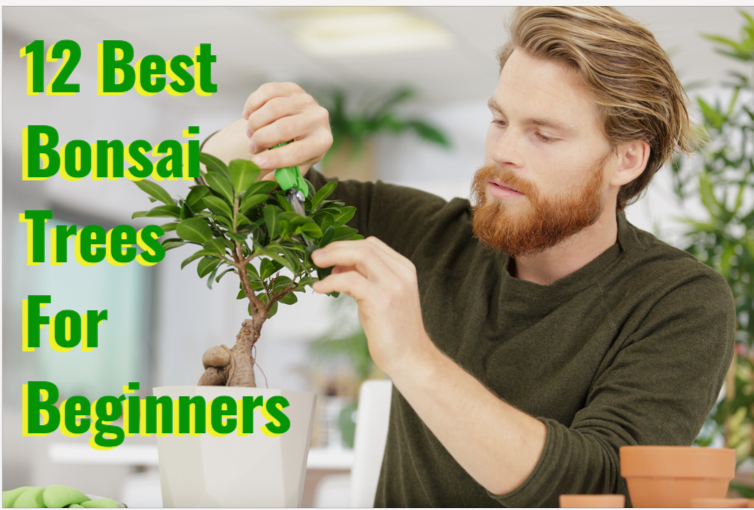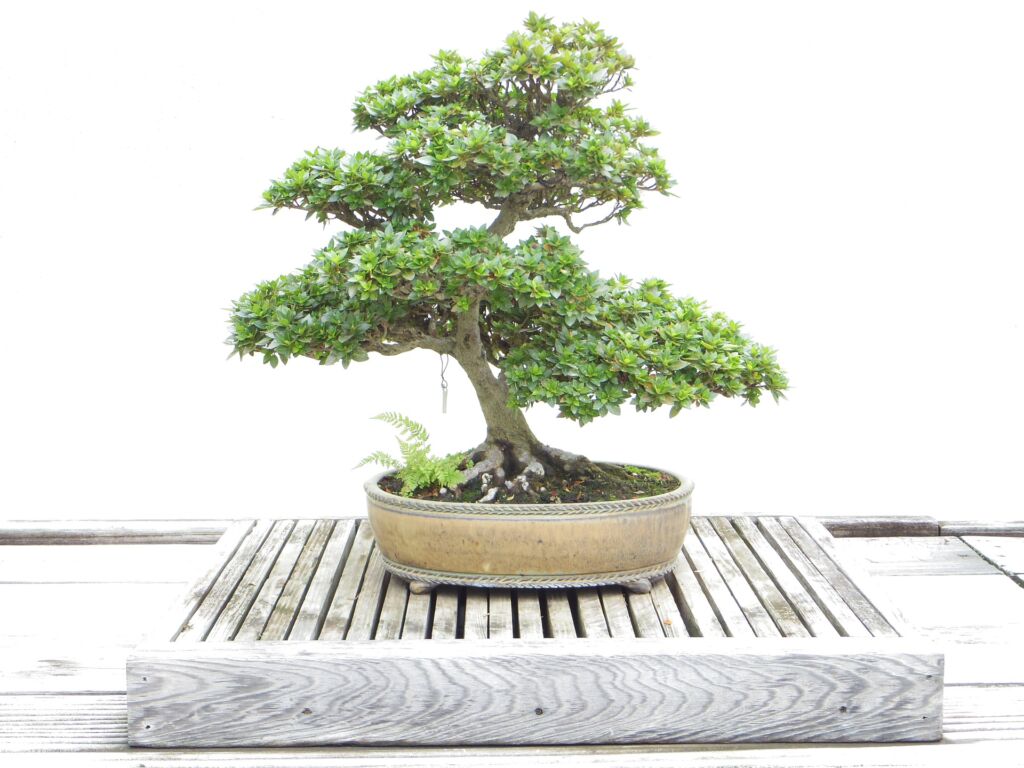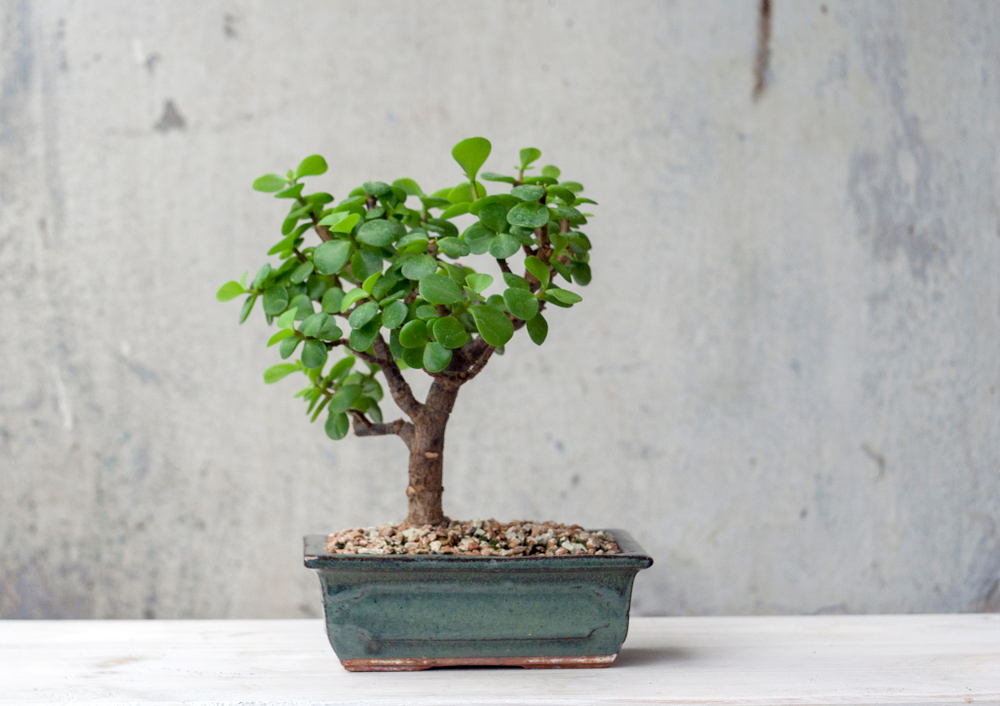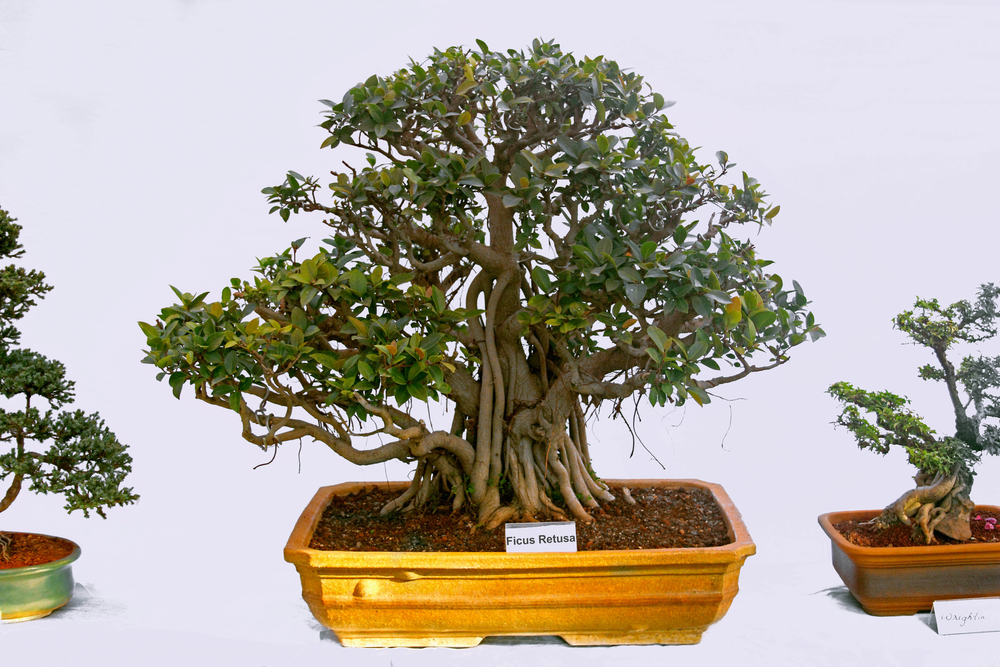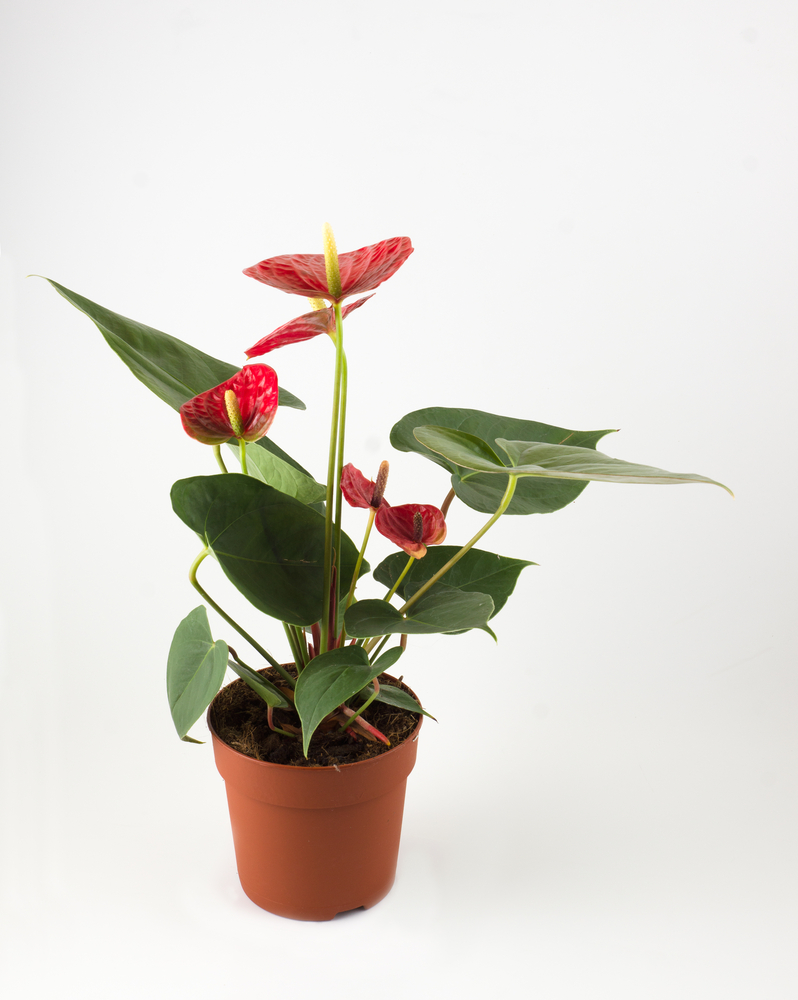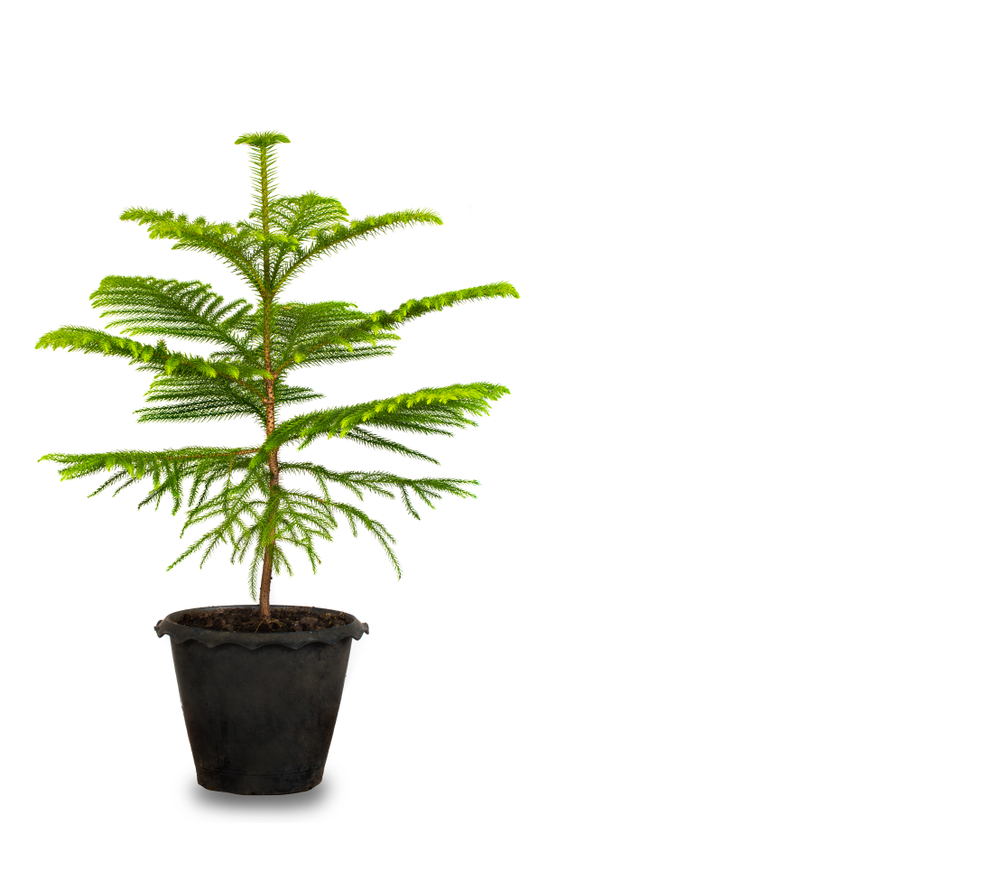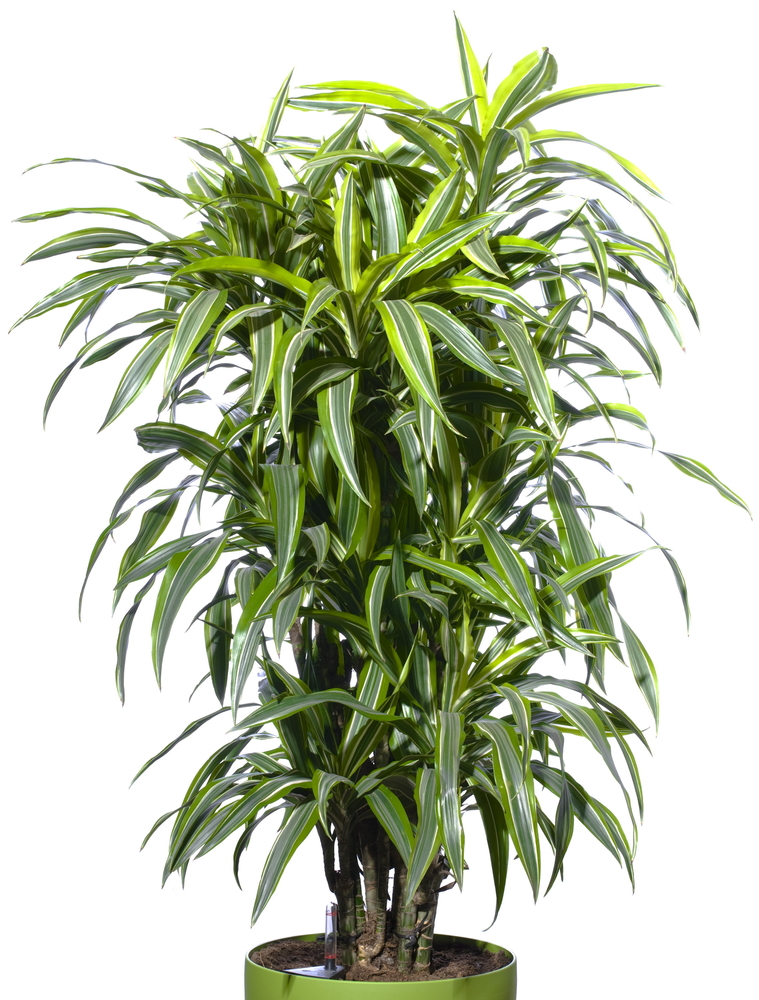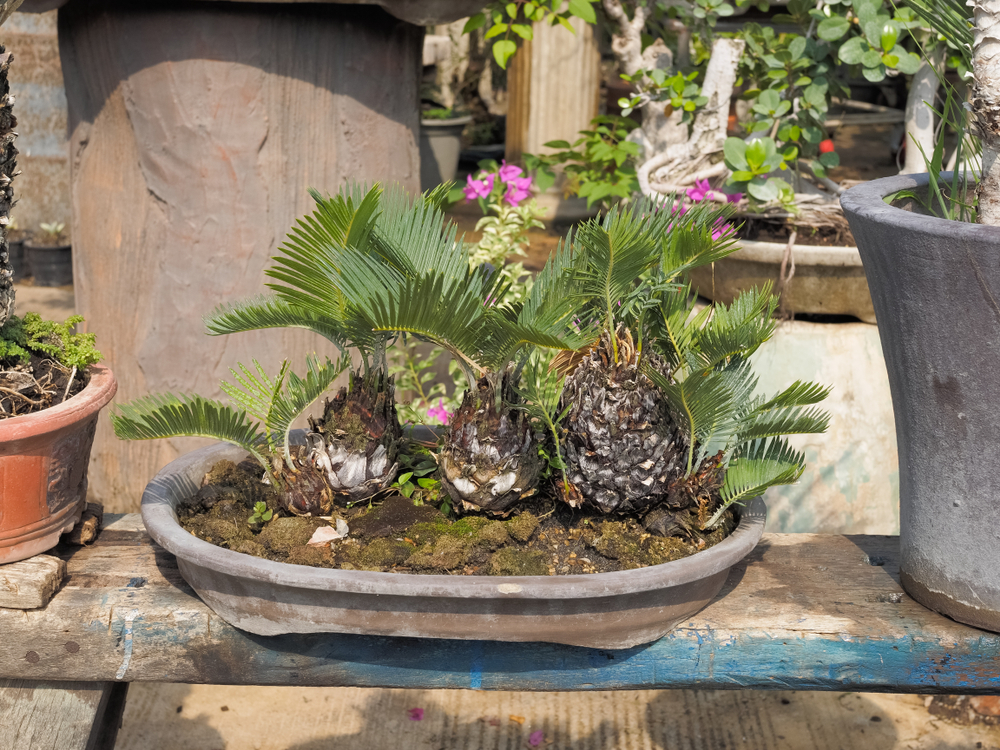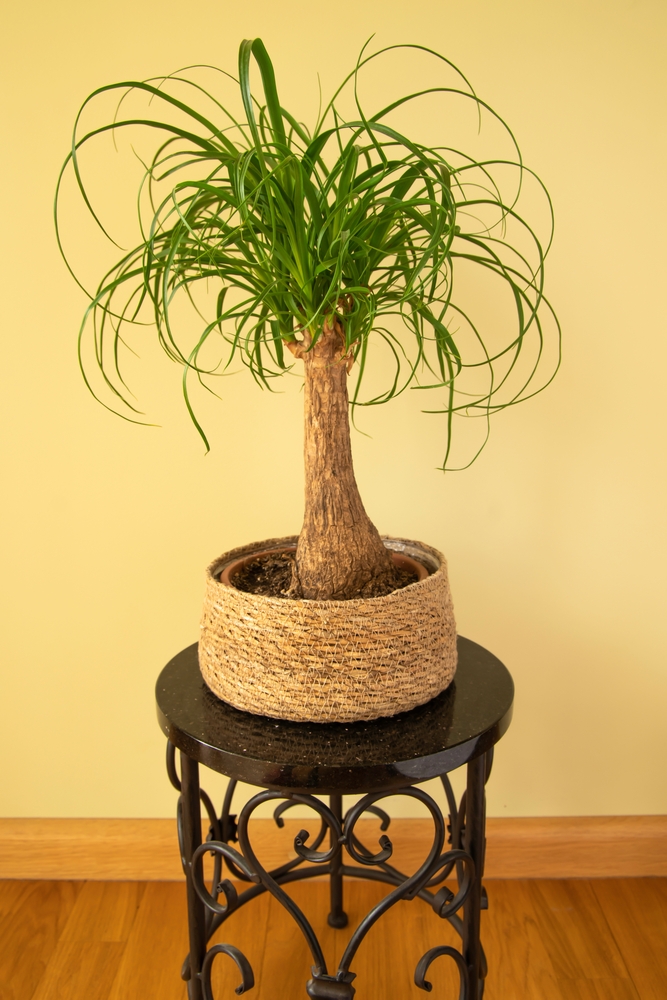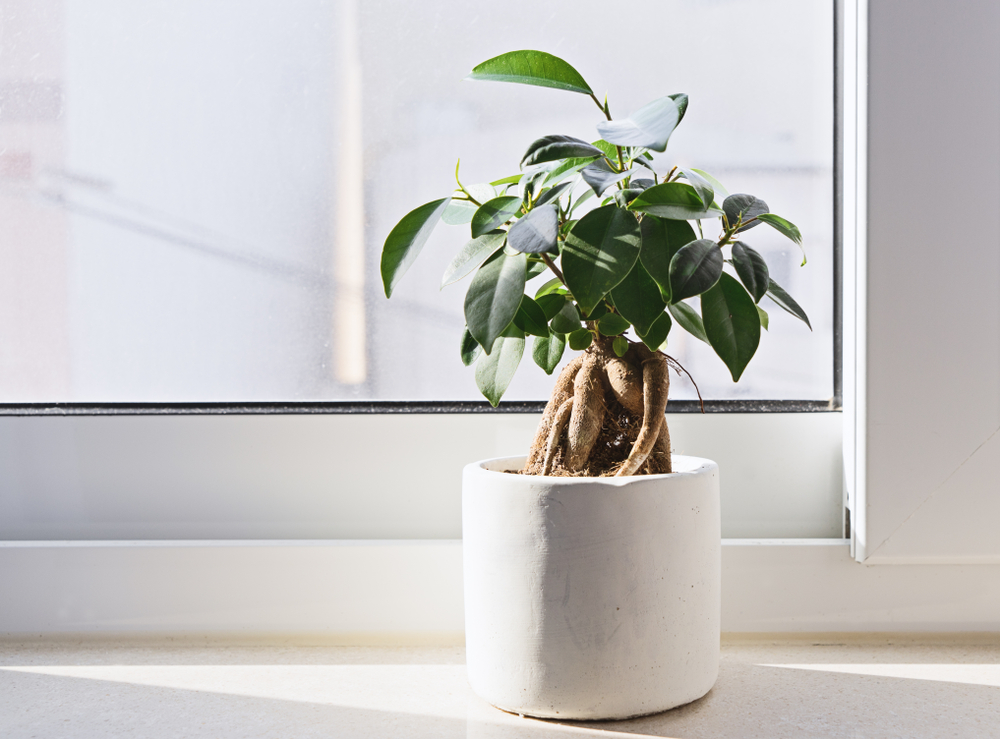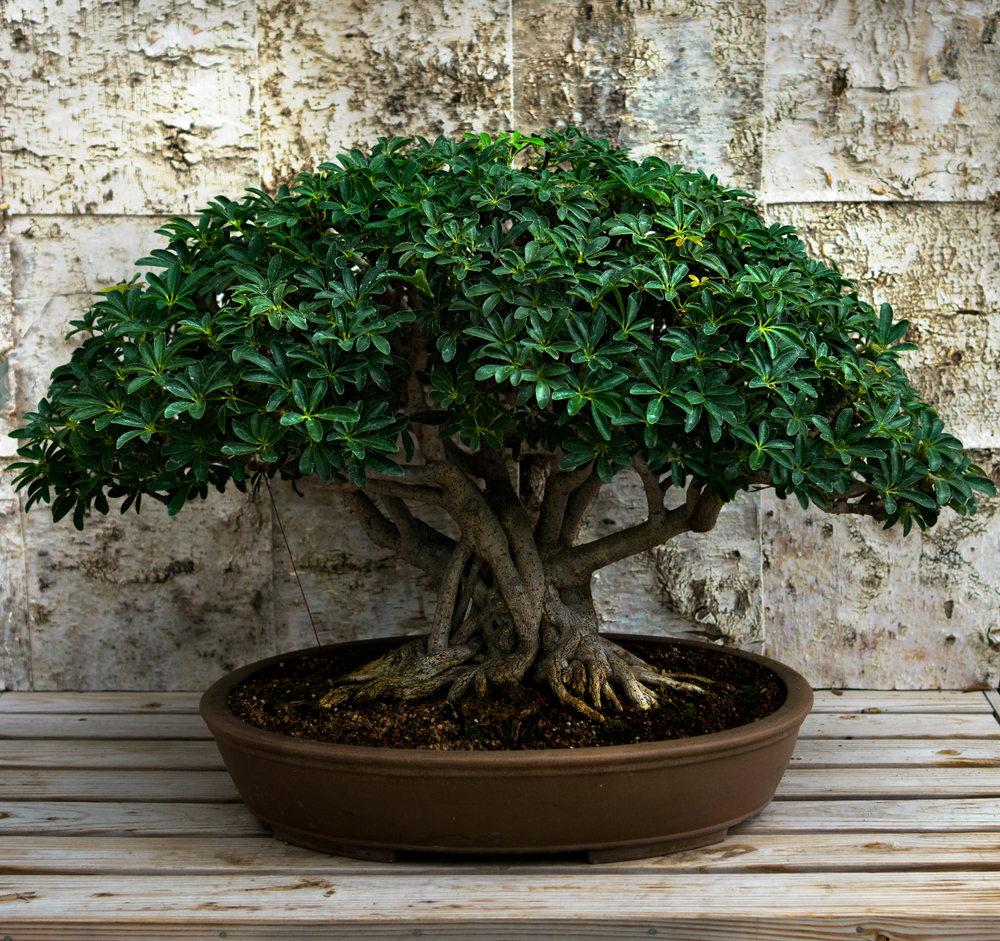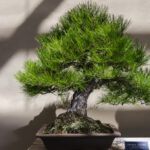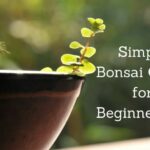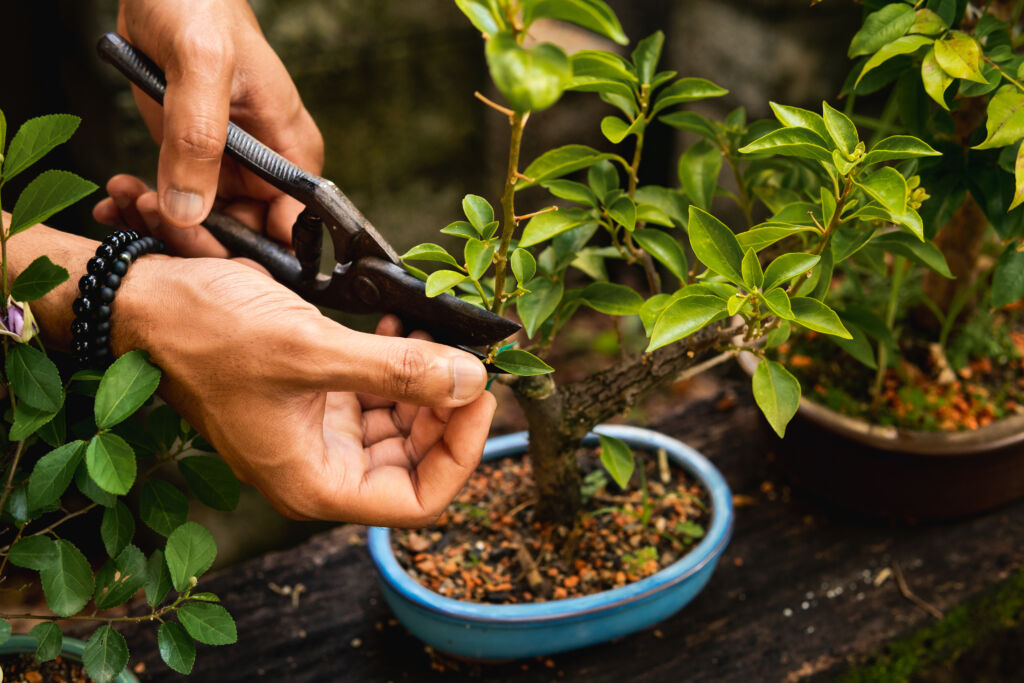HousePlantJoy is supported by our audience. When you purchase through one of our links, we may earn a small affiliate commission. As an Amazon Associate I earn from qualifying purchases. Your cost is not affected.
==================
12 Best Bonsai Trees For Beginners
Bonsai trees are a beautiful and ancient art form. While they may seem intimidating to beginners, there are actually a number of great bonsai trees that are perfect for those just starting out. In this blog post, we will discuss twelve of the best bonsai trees for beginners. We’ll provide information on each tree’s care requirements, as well as some tips on how to get started with bonsai. So if you’re looking to add a touch of beauty to your home or garden, consider picking up one of these amazing plants!
Starting the Bonsai hobby offers incredible enjoyment that might last throughout your life. In fact, bonsai trees often outlive their caretakers!
Best Bonsai Trees for Beginners
Choosing the right Bonsai makes your new hobby easier to start. With so many options available, people often feel confused. Let us help! Consider choosing from among these 12 best bonsai trees for beginners. Let’s start growing Bonsai!
1- Jade Bonsai Tree
Meet the Jade Bonsai Tree, the best beginner bonsai tree. Jade provides an easy choice as it requires less care than many houseplants and offers great appeal. With water-absorbing leaves and trunk, Jade needs less frequent watering, too.
Use wire to shape your Jade tree, a technique recommended for the best beginner bonsai tree. Pruning back allows them to bud back very quickly. With a little care, your Jade continues to look beautiful for many years.
Jade Bonsai Care Guidelines
Placement:
In most regions, Jade needs to live indoors. They don’t tolerate temperatures below 40 °F. The Jade tree needs substantial light, and full sun if possible. Even indoor plants require enough light. How will you know Jade is getting enough light? Look for the leaves to develop red tips or edges. Those red tips assure you that Jade is happily soaking up the sun.
Watering
Jade’s leaves and trunk soak up large amounts of water, storing it for use later. As such, we water the Jade less frequently and allow it to dry out slightly between waterings. During the growing months (Spring, Summer, Autumn) check the water once a week. If the soil is not almost dry, wait a day or two longer. During winter months, consider watering less often, perhaps once every 3 weeks. Jade does tolerate some overwatering but lives quite happily with less frequent drinks.
Fertilizing
Like most plants, Jade grows during the Spring, Summer, and Autumn months, resting during winter. As such, use a general fertilizer during the growing months and avoid using any during the winter.
Pruning and wiring
Jade, a succulent, retains water in the leaves, branches, and trunk. This makes the limbs quite heavy and the branches and trunk naturally bend in response. Jade responds quite well to pruning. Prune it regularly to force the growth of branches, especially in the lower part of the trunk. Avoid using cut-paste on Jade trees. The water-holding nature of the trunk and branches make it very susceptible to rotting.
Jade’s bark is very soft. This makes it necessary to use caution when wiring. Use wire with great care and caution to avoid damaging your Jade Bonsai.
Repotting
Jade needs to be repotted every other year in spring. Use a well-draining soil mixture. Avoid watering the soil for about a week after repotting to allow any cut or damaged roots to dry and callous. Note that watering too soon after repotting often leads to root rot, thus damaging your tree.
Propagation
Jade enthusiasts enjoy the fact that the Jade tree propagates quite easily. Take cuttings during the summer months and you might grow a Jade garden!
Pests and diseases
Jade offers few problems when it receives enough sunlight and the proper amount of water. We consider Jade to be one of the easiest Bonsai to keep healthy for many years.
Jade Bonsai (Portulacaria afra)
2- Chinese elm bonsai trees
The Chinese Elm bonsai tree is another excellent bonsai starting tree for beginners. When people think of what a bonsai tree distinctively looks like, the Chinese Elm bonsai tree is what everybody sees. Although this tree needs daylight during the summer season, it requires a certain dormancy amount during the colder months to rest.
For those looking to learn about the fundamentals of pruning, lighting, watering, and preserving a bonsai, Chinese elm bonsai trees make a great choice. You will be able to manage almost every form of bonsai tree once you’ve mastered keeping a Chinese Elm tree alive and healthy.
Chinese Elm Bonsai Care Guidelines
Placement:
The Chinese Elm stays quite happy in full sun or partial shade. While it endures a light frost, most experts recommend bringing it indoors during the winter months. And, in fact, many Chinese Elm Bonsai happily live inside year-round. Those kept outside during the winter months usually drop their leaves in the fall. However, indoor plants might keep them through the winter, dropping them in the Spring when their new shoots appear.
Watering
The Chinese Elm stays healthiest with moderate watering. They often fail if allowed to dry out completely or if kept soggy all the time. For best results, wait until the topsoil is just dry, with some moisture retained under. Then provide a generous amount of water so that even the root mass receives water.
Fertilizing
Like most plants, the Chinese Elm grows during the Spring, Summer, and Autumn months, resting during winter. As such, use a general fertilizer during the growing months and avoid using any during the winter. This tree needs a generous amount of fertilizer. Consider using a mix of solid and liquid fertilizers.
Pruning and wiring
The Chinese Elm grows thick and brush-like very quickly. To keep it contained, trim frequently. When the shoot has 3 to 4 nodes, prune it back to about 1 to 2 leaves. You’ll find new buds emerge quite well after such a pruning. Preferably, trim these larger branches in late autumn.
The Chinese Elm shapes quite readily using standard wire and guy wire techniques.
Repotting
Your Chinese Elm Bonsai needs repotting about every two years. In later years, the time between repotting can be extended. We always prefer to prune in the Spring to give the tree a robust start in new growth.
Since the roots grow intertwined and crooked, care needs to be used with pruning the roots. If done correctly, you create a nice Nebari, which is the Japanese term for the roots above the ground’s surface. This nebari, seen just below the tachiagari (lower part of the tree’s trunk) helps determine the age of the tree.
Propagation
While the Chinese Elm may propagate from seed, we find the easiest way is to use cuttings. The Elm cuttings root easily and grow a bit faster than from seed.
Pests and diseases
In lower humidity environments, you might see spider mites or scale on your Chinese Elm. Keeping the humidity level up helps, either using a humidity tray or spraying frequently. However, once you see them, use a pesticide to eliminate them. Avoid products containing thinned lime-sulfur or systemic pesticides. They often cause the Elm to shed all the leaves.
Chinese Elm Tree Bonsai (various shapes)
3- Hawaiian Umbrella Bonsai Tree
If you are unfamiliar with bonsai or you do not have a green thumb, this is the tree that we suggest. It is one of the best bonsai trees to care for and is a beautiful “trouble-free” evergreen in our view. This bonsai is the tree to pick if you don’t know which tree to buy as a gift.
This versatile tree is perfect for home office rooms or anywhere and does well in low to high light levels. Moreover, this bonsai tree features small leaves in an umbrella that forms dense green foliage. Besides, it is a widespread bonsai tree and an essential indoor treatment required by this plant.
Hawaiian Umbrella Tree Bonsai Care Guidelines
Placement:
Except in very warm regions, keep the Umbrella Tree inside year-round. They prefer a temperature range of 65°F to 72°F but will tolerate some range from there. However, they do poorly if the temperatures fall below 50°F. The Hawaiian Umbrella Tree Bonsai tolerates lower humidity levels. While they manage in dimmer lighting, they do best with more light.
Watering
Check the water often and never let the roots dry out. In fact, it’s best to check the soil with your finger every few days and water well when the top of the soil starts to dry.
Fertilizing
The Umbrella Tree likes weekly fertilizing during its growing months, Spring, Summer, and Autumn. We also recommend providing fertilizer once a month during the winter months. Liquid fertilizers work for year-round application but you might use a solid during the summer months if you choose.
Pruning and wiring
Shape your Umbrella Tree by careful pruning. If your tree is very healthy, extra pruning causes many new shoots to appear. Also, such pruning helps keep the leaves smaller, making the tree appear more balanced for its size.
This tree grows less flexible than others, due to the fact that it is not hardwood. When training using wire, use caution to avoid snapping the branches. Younger trees maintain more flexibility so the risk of damage is much less.
Repotting
The Hawaiian Umbrella Tree should be repotted every other year, in the Spring. When repotting, use caution as the roots break easily.
Propagation
Like the Chinese Elm, the Hawaiian Umbrella will reproduce using seeds or cuttings. Most growers find that cuttings work best and can be rooted in soil or water.
Pests and diseases
While you might see Scale occasionally, the Umbrella Bonsai is quite disease resistant. It’s not usually attacked by insects, either.
Hawaiian Umbrella Tree Bonsai
4- Ficus Retusa Bonsai Tree
Another pick for the best bonsai trees for beginners is Ficus Retusa. Often referred to as Banyan Fig., There are small, dark green, oval leaves on the Golden Coin Ficus similar to the Ficus Microcarpa.
It has grey to reddish bark, which, like tiger-like markings, is dotted with thin, horizontal splodges. It has a strong trunk that can equip with a curve trunk in the typical bonsai style. Moreover, Bonsai trees are for indoor use and are among the most pleasant, flexible, and trouble-free.
Ficus Retusa Tree Bonsai Care Guidelines
Placement:
The Ficus needs to be an indoor tree and requires temperatures above 60°F. It also needs a lot of light and prefers full sunlight. It will not tolerate shade. While they can tolerate some lower humidity levels, they prefer higher humidity. Also, high humidity is needed to develop the aerial roots.
Watering
Water generously when the soil starts to feel dry. You might mist it occasionally but be aware that too much misting might create fungal growth.
Fertilizing
Use either liquid fertilizer or pellets. Fertilize every two weeks during the growing season (Spring, Summer, Autumn). During winter, every four weeks provides sufficient nourishment.
Pruning and wiring
To maintain the tree shape it needs regular pruning, as Ficus Bonsai has grown with a large leaf. Assuming a significant thickening of the storage compartment is wanted, the Ficus can be left to develop openly for a couple of years. The solid cuts that are important thereafter don’t influence the Ficus’ wellbeing.
Repotting
Repotting your Ficus tree throughout the spring, each and every other year, utilizing an essential Bonsai soil blend. Ficus endures root-pruning well overall.
Propagation
When it comes to propagation, springtime is the best time for establishing Ficus seeds. Cuttings can be planted whenever of the year, yet they have the most elevated achievement rate during mid-summer development. Air-layering will work best during spring, from April through May.
Pests and diseases
Ficus Retusa is very safe against bugs, however, they are as yet powerless to a few issues relying upon their area, particularly in the colder time of year. In poor conditions like these, they’re typically overrun with scale or spider mites. inserting customary insect powder sticks into the soil or spraying insecticide/miticide can get obviate the pests
Ficus Retus Bonsai Tree
5- Red Anthurium Bonsai Tree
Anthurium is the most common of all tropical flowers and is long-lasting. These reddish, heart-shaped, lovely beauties are the world’s best-known beauties. Due to their trouble-free growing needs, our Anthuriums have been specially hybridized for use as houseplants. Your bonsai can last for years with good care.
As long as you have a few main elements for the plant, proper care for Anthurium is simple. Nevertheless, as this can burn the leaves, these plants cannot withstand strong sunlight. In bright, natural daylight, they usually grow. Be sure to water your Anthurium plant periodically, but do not overwater. Water the Anthurium only if the soil becomes dry to the touch.
Red Anthurium Care Guidelines
Placement:
The anthurium is smarter to put in a light spot, yet not in direct daylight. Since when it is situated in direct daylight, its leaves can get singed. The anthurium is a glow darling, so be mindful so as not to put it in a dim spot since there’s plausible that it will give fewer blossoms, anthurium flower best temperature is between 20° C and 22° C.
Watering
Watering anthuriums is easy, though a little contradictory. Its water necessities are exceptionally light, anthuriums are slow-developing plants that produce level, spade-molded leaves and weird, bright blossoms.
Fertilizing
Caring for anthurium plants doesn’t need an excessive amount of fertilizer. It just should be treated with a one-quarter strength compost once every three to four months. Also, to have an extraordinary outcome, some are suggesting using a fertilizer that has a higher phosphorus number.
Pruning and wiring
Anthurium trimming should be done regularly to keep the plant upstanding and adjusted Pruning Anthurium is started from top to down, eliminate unruly leaves to work on the presence of the plant, however, leave no less than three to five set up and eliminate any stained or dead leaves. You can likewise chop shriveled or dead blooms down to the foundation of the stem and if conceivable eliminate first every one of the matured leaves.
Repotting
Anthuriums should be repotted every two to three years, or when they’ve grown out of their present pot. Carefully eliminate it from its present pot, trim any earthy colored leaves or shriveled blossoms. Then, at that point, place it into a somewhat bigger pot (around 1-2 inches bigger in width) and fill it with light and circulated air through soil mixes, for example, a mix that is half peat greenery and half coconut fiber.
After repotting anthurium, water it three times the normal amount (18 ice shapes, or 1 1/2 cups) until new leaves develop.
Propagation
Propagating Anthuriums are started cutting with somewhere around two hubs on the stem, ideally in spring or late spring. Dust the cut end with a fungicide and afterward embed it into a sterile preparing blend. Water and afterward put the pot and slice into a plastic sack to increment mugginess around the foliage. Place it in a warm area with splendid, separated light and water on a case-by-case basis to keep the preparing blend soggy yet not waterlogged.
Pests and diseases
Anthurium is truly vulnerable to bacterial and parasitic illnesses that can genuinely restrict business creation. The bacterial scourge brought about by Xanthomonas is presumably the most genuine. Root spoils brought about by Rhizoctonia, Pythium, and Phytophthora additionally happen in Anthurium creation. It is thusly critical to have the option to distinguish and dispose of these sicknesses
Red Anthurium
6- Norfolk Island Pine-Medium Bonsai
When it comes to bonsai, the classic miniature pine from Norfolk is one of the best bonsai tree. This species will do well with just about any theme and has fascinating features. Moreover, it has a Christmas tree-like fragrance, making it an appealing choice for bonsai enthusiasts. The Norfolk Pines, although not exactly pine trees, only require a few hours of sunshine a day to get by.
Conifer with pale green leaves, open and airy, becoming darker with age. It’s one of the best-known South Pacific trees. It can tolerate warm temperatures and does not even object to dryness, although it does not like glaring sunlight. Cultivate them in sets of three in a pot and trim the branches by hand—simple treatment.
NorfolkTree Bonsai Care Guidelines
Placement:
The tree can be developed indoors, yet the plant ought to be pivoted consistently so that the trunk gets even exposure to its light source. openness to its light source. The inability to pivot the plant will bring about a twisted trunk. The Norfolk Island Pine makes a beguiling and lavish houseplant. Essential prerequisites incorporate around a few hours of direct daylight consistently and standard watering. The storage compartment might develop toward the light making it crucial to turn the plant a quarter turn consistently so it doesn’t bend.
Watering
The ideal watering plan for Norfolk pine is one that permits the plant to turn out to be somewhat dry between each watering. More water will be expected throughout the mid-year and, then again, less water will be expected during the wintertime. Norfolk pine could do without the dirt being wet, however, it likewise could do without being absolutely dry
Fertilizing
Norfolk pine trees don’t need a great deal of fertilization. In the event that you are adequately fortunate to have the option to develop these trees outside, they ought to have the option to deal with themselves, particularly whenever they have become laid out
Pruning and wiring
These trees are challenging to prune, and pruning should be completed with incredible consideration so as not to hinder the development of the plant. The best opportunity to prune the tree is during springtime. The new buds ought to be pruned while they are as yet a light-green tone.
Repotting
Re-pot the tree each and every year in free, simple depleting soil. A decent bonsai soil blend is suggested.
Propagation
Propagation of Norfolk Island Pine is by seed which develops decently quickly (10-15 days). The seed ought to be put level on the germination medium without covering and softly moistened or misted until the taproot arises and top development is started.
Pests and diseases
The primary disease to keep an eye out for with Norfolk Island pines is really not a sickness, rather it is their sluggish speed of developing further roots, particularly when they are youthful. This issue well had some significant awareness of the Norfolk Island trees, in any event, when developed under ideal circumstances in wonderful soil. This is the explanation this tree has additionally been known as the “self-destruction tree,” since some of them tend to not accomplish the work conceivable to not allow themselves to bite the dust.
Norfolk Pine Tree Bonsai
7- Dracaena Bonsai Tree
It’s usually called the Dragon Tree of Madagascar. The Marginata has a slender trunk and a mass of thin pointed variegated leaves with green and white stripes along the outer side, nearly vertical to horizontal. Like a braided trunk, we grow three trees that will stay permanently formed as the tree ages. Moreover, an indoor tree is easy to look after.
Dracaena plants in low light do remarkably well. Move it out of direct sunlight after you have trained your plant into its desired shape. The plants will prefer this care, but they will slow their development and maintain a manageable scale.
Dracaena Bonsai Tree Guidelines
Placement:
The initial step is to remove the plant from its current compartment and brush away as large a part of the dirt as possible. Make certain to eliminate any stuck on rocks that might have been placed in the highest point of the compartment with the plant. Once you’ve established your new expansion, place it in a space where it will get splendid, circuitous light. Permit the dirt to dry out between watering, yet don’t allow it to sit in dry soil for a really long time. Your plant will endure anything over a couple of days with dry soil.
Watering
Whenever now is the ideal time to give your evergreen a beverage, splash the dirt uniformly until the fluid runs out of the seepage openings in the lower part of the pot. After you give your tree a beverage, ensure that it’s not sitting in wet soil. You’ll need to ensure your pot has satisfactory waste openings, and that you channel any fluid leftover in the plant’s saucer after it’s doused. In the event that your example is very enormous and its holder very weighty, you might require an aide for this move – one set of hands to lift the pot, and one more pair to eliminate and exhaust the saucer.
Fertilizing
Norfolk Island pines-particularly more youthful trees-have famously feeble underground roots. To reinforce their underlying foundations, ensure you’re providing ordinary compost, and feel free to your tree up in the event that it needs support. Feed your Norfolk pine with a weak liquid fertilizer throughout the growing season, although it is best to suspend fertilizing in low-light periods.
Pruning and wiring
Dracaena ordinarily develops with one tail and a tuft of leaves at the top. While you can’t make a perplexing overhang of branches as you can for certain different species, you can remove the top from a mythical beast tree and it will convey new shoots. That implies you can leave it as-is with a solitary stem and tuft, or cut it and grow a few new stems, each with its own tuft of leaves.
Repotting
Dracaena has a ton making it work as a bonsai. It can fill in low light, can remain inside all year, and doesn’t need a great deal of upkeep. Yet, there’s only one exemption: These plants develop rapidly, and they’ll be repotted or have their foundations managed significantly more as often as possible than most different plants utilized customarily to make this plant craftsmanship.
Propagation
Although developing cuttings of Norfolk pines is absolutely conceivable, it’s not generally so natural as, say, developing hoya or spiderwort from cuttings – several other home investigations in cloning. One of the provisos with propagating cuttings from this conifer is that taking a cutting from a branch will bring about a slicing that keeps on developing like a branch. In the event that you don’t need another plant that develops like a branch, you can take a cutting from the focal developing tip, however, this might mean forfeiting the parent plant since there is just a single developing tip on Norfolk Island pines.
Pests and diseases
Any bug or infection that can affect dracaena houseplants can hurt your bonsai. Aphids, mealybugs, scale, and bug parasites are generally irritations to look for. Watch out for delicate decay and leaf spots also.
Dracaena Bonsai Tree
8- Sago Palm Bonsai Tree
The Sago Palm is an exotic palm that is long-lived and tolerates neglect but continues to thrive with attention. It is ideal for indirect light or full sun and has a wide range of temperatures from 15 to 120 degrees F.
A slow rate of growth enables indoor specimens to stay forever in the same container. Treat water like a cactus when it is almost dry and seldom fertilized—fantastic indoor bonsai. Sago Palms enjoy full sun but adjust to brightly light outdoor shade or indoor environments or a few mornings or afternoon sun periods.
Sago Palm Bonsai Tree Care Guidelines
Placement:
The Sago Palm will flourish inside in high light and likes being kept outside throughout the spring and summer. Whenever evening temperatures decrease under 45 degrees we recommend that you put the tree on a windowsill or on a table before one.
Watering
It doesn’t exactly make any difference “how” you water your tree, but instead that when you are done the tree has been very much water. The watering of your bonsai should never be dismissed. Apply water before the dirt seems dry – – never permit the dirt to turn out to be totally dry. It is really smart to utilize a dampness meter until you get to know the necessities of your bonsai tree. Water ought to be applied until it starts running out of the openings in the lower part of your pot.
Fertilizing
Fertilizing and eating are additionally fundamental on the off chance that your bonsai is to stay solid and delightful. Since your bonsai is filling in a modest quantity of soil it is important to renew the dirt’s stock of supplements occasionally. Any universally useful fluid compost will really do fine and is accessible in most nursery communities. We propose that composts be utilized at a large portion of their suggested strength. Manure ought to be applied no less than once every month besides during winter. Your bonsai will likewise answer well to foliar taking care of, with a water-dissolvable compost applied each and every month as a splash.
Pruning and wiring
Pruning and wiring keep your tree scaled down. Squeeze and trim back the new development to the farthest protected point. Never should all of the new development be taken out. A little ought to be left to support the well-being of the tree. Tropical and sub-tropical trees utilized for bonsai will require intermittent squeezing and managing overtime. Since various trees develop at various rates, it is important to assess each tree’s pace of development and change your managing and squeezing to oblige it.
Repotting
The Sago Palm ought to be repotted in the spring or summer. This Bonsai likes to be root bound and ought to be repotted into a compartment just marginally bigger than the root foundation taking more time to not completely encase the roots in the dirt. When repotting, you will need to softly manage the roots and afterward make certain to eliminate an equivalent measure of lower leaves. Subsequent to repotting, water completely and don’t prepare for 3 a month.
Propagation
Propagation is accomplished with seeds or expulsion of branch-offs called “puppies”. Absorb the seed water for a long time, and afterward eliminate the red skin, leaving the white hard seed coat. They can be planted right away, or kept in a cool, dry spot until March or April. Sow seed sideways, allowing the top edge to remain uncovered, in all-around depleted sodden not-soaked soil. The seed will sprout in 3-9 months, however, may require over three years of development to arrive at a little bulb size 1″ in measurement.
Pests and diseases
Since your bonsai is a tree in scaled-down, it very well may be treated for bugs and sicknesses equivalent to some other tree. In the event that you find any bugs or illnesses, visit our site where you will actually want to get the vital items to take out the issue
Sago Palm Bonsai Tree Group
9- Flowering Ligustrum Bonsai Tree
Another pick for the best bonsai trees for beginners is this flowering ligustrum bonsai. Originally from China and Eastern Asia, and it is now ornamentally cultivated in the U.S. In traditional Chinese medicine, berries can use as a tonic for a wide variety of disorders, including skin damage, tinnitus, and chronic toxicity.
Throughout spring and early summer, white flowers are attractive. It’s doing well indoors. To prevent it from drying out and staying dry, give it enough water. If it gets too dry for too long, a Ligustrum cannot tolerate watering well and wilt.
Flowering Ligustrum Bonsai Tree Care Guidelines
Placement:
The Flowering Ligustrum will flourish inside in high light and likes being kept outside throughout the spring and summer. Whenever evening temperatures decrease under 45 degrees we recommend that you put the tree on a windowsill or on a table before one.
Watering
Water completely and profoundly when it needs water and let it pause and rest prior to watering once more. An old bonsai watering stunt is to put the whole pot in a sink of water an inch or two profound and let the water assimilate from the openings in the lower part of the pot. One more most loved method for knowing whether it needs watering is to lift it. You can get a sense of whether it needs watering by its weight.
Fertilizing
Whenever new development shows up in the spring now is the ideal time to begin taking care of your bonsai. Utilize natural fluid manure or a substance compost weakened to one-half strength. Prepare at regular intervals during the developing season and when a month in the colder time of year.
Pruning and wiring
Weighty pruning ought to be finished during the pre-spring or late winter before new development begins. Trim to shape through the developing season; eliminate overlarge leaves and shoots with overlong internodes.
Repotting
You ought to repot your Ligustrum yearly in the spring (as new buds expand) utilizing a fundamental soil blend. Subsequent to repotting, water completely and place Ligustrum in an obscure area for quite a long time so new roots can develop.
Propagation
You can begin growing a ligustrum bonsai from cuttings, uniting, through air-layering, and from seeds. In any case, be certain that you do the methodology appropriately in the gathering, cutting, or graft to make sure that they are viable to grow your bonsai well
Pests and diseases
The standard minor stuff can irritate a Ligustrum, similar to Aphids, leaf spot, scale bugs, bug bugs, whiteflies, and root decay. These can be gone after with the utilization of insect sprays and fungicides as showers, sudsy flushes, or fundamental toxins. Utilize standard insect poisons at a large portion of the weakening rate.
Chinese Privet (Ligustrum sinese) Bonsai: photos taken over 3 years
10- Ponytail Palm Bonsai Tree
The ponytail palm tree, also known as the Foot of Elephants due to its scaly texture resembling an elephant’s foot, has become a favorite houseplant among beginners. It is easy to look after, making it a perfect choice for indoor spaces with low or higher lighting conditions. The most striking characteristic of this beginner bonsai tree is its swollen base of the trunk, which acts as a water buffer during dry spells, allowing the tree to go without water for up to two weeks with no ill effects. Whether it’s for your house, workplace, or any other indoor setting, the Ponytail Palm offers effortless indoor maintenance, making it an ideal choice for beginners in bonsai cultivation.
Ponytail Palm Bonsai Tree Care Guidelines
Placement:
It cherishes a TON of sun, so don’t feel the need to protect it. Simply guarantee it’s all-around water. Like most palm trees, a ponytail palm bonsai is tropical. That means it wants to stay warm all year long. When the outdoor lows are around 50 degrees F, place your ponytail palm bonsai tree on a windowsill indoors. South facing is best, east or west is second best, and you should avoid north if you can (or just use an indoor grow light.)
When the temperatures are above 50 degrees, your ponytail palm bonsai tree can live outdoors.
Watering
Never allowed the dirt totally to dry out. Whenever the dirt appears to be dry, completely water your tree until the water runs clear from the base. In the developing season, this can be every day.
Fertilizing
Since your ponytail palm bonsai is in a little pot, and not the ground, it needs supplements. A sluggish delivery (pellet-based) manure is ideally suited for this and can be added sparingly every 1-2 months during the developing season.
Pruning and wiring
A regular trim will help keep your ponytail palm bonsai tree short while helping the trunk grow thicker and rims back the new growth to the farthest safe point that looks good to you — but never remove all of the new growth.
Repotting
By and large, this implies each 2-3 years for a deciduous tree and each 4-5 years for evergreen or tropical. Repotting should be performed occasionally on your bonsai, ponytail palm tree included when its root foundation has filled the pot. In the event that you can obviously see the roots emerging from the lower part of the pot, now is the ideal time to repot your bonsai.
Propagation
There are a couple of known ways of engendering braid palms, to be specific through seeds and cuttings. Despite the fact that there are very few strategies to increase your braid palms, these ways are not difficult to achieve and will remunerate you of another long-living plant.
Pests and diseases
Your ponytail palm bonsai can be treated for bugs like an ordinary ponytail palm tree. Simply recall, your tree is scaled-down and will require a lot more modest and gentile portion of treatment.
Ponytail Palm Tree Bonsai (Beaucarnea Recurvata)
11- Green Island Ficus Bonsai Tree
This stunning, reliable, and low-maintained tree should appear on the favorite list of any homeowner. It has glossy dark green leaves thicker than the regular ficus leaf but thinner than a Jade leaf. At a relatively early age, it forms a thick trunk and develops aerial roots. It only requires fundamental indoor treatment.
Moreover, it will become one of the favorite bonsai you have. It also grows well as a shade tree and is frequently used as an indoor tree and in bonsai for this reason. At the same time, historically used as a street plant.
Green Island Ficus Bonsai Tree Care Guidelines
Placement:
It requires a great deal of light, ideally full daylight, so be certain not to put it in an obscure area. The temperature ought to be kept moderately consistent. Figs can persevere through low stickiness because of their thick, waxy leaves, however, they lean toward higher dampness and need very high moistness to foster elevated roots.
Watering
The Bonsai Ficus favors room temperature delicate water and it can endure infrequent over, or underwatering. We prompt day-to-day clouding to keep up with mugginess, yet a lot of moistening can make contagious issues. The hotter the arrangement of the fig during winter the more water it needs.
Fertilizing
Fertilize at regular intervals during summer, and like clockwork during winter in the event that the development doesn’t stop. Fluid manure can be utilized as well as natural compost pellets.
Pruning and wiring
Normal pruning is important to hold the tree’s shape. Prune back to 2 leaves after 6-8 leaves have developed. Leaf pruning (defoliation) can be utilized to lessen leaf size, as some Ficus Bonsai species typically develop enormous leaves. Assuming an extensive thickening of the storage compartment is wanted, the Ficus can be left to develop unreservedly for a couple of years.
Repotting
While the plant is certainly not a quick producer, its foundations in all actuality do fan out a considerable amount. Thusly, they will need to go past the dividers of their holders eventually on schedule. Repotting is frequently required once at regular intervals or thereabouts. This is the situation for pruned green island ficus including those developed as bonsai.
Propagation
Engendering is conceivable with root cuttings. The underground root growth spreads rapidly, frequently arriving at a few feet. The roots can be partitioned and isolated to spread the plant or develop new plants. Take a cutting from a more youthful plant, dunk it in root chemical and plant it in its own four-inch starter compartment.
Pests and diseases
Microcarpa is not difficult to really focus on with no significant bugs or sickness issues to stress over. Notwithstanding, mealybugs and scale bugs bother truly do set up home on the underside of leaves and along leaf axils.
Ficus Bonsai Tree
12- Oriental Ficus Bonsai Tree Exposed Root
Our last pick of the best bonsai trees for beginners is an oriental ficus tree with exposed roots. As they produce sturdy trunks, a beautifully branching form, and shiny leaves, this Evergreen tree is perfect for bonsai training.
As the leaves that subsequently grow would be smaller than those removed, it is best to trim in early summer. In the traditional upright broom form, it can cultivate. Great for year-round indoors, the lighter the venue, the more streamlined the growth.
Oriental Ficus Bonsai Care Guidelines
Placement:
To effectively develop this bonsai tree you need to comprehend that it could do without a lot of daylight. So that it’s not a smart thought to put it on south-bound windows where it could get 8-12 hours of daylight.
Watering
This one of the bonsai trees that most certainly could do without its foundations being continually dousing wet so it’s smart to allow it to dry out only a tad with watering. The easiest way to tell if your bonsai tree has been given enough water is to keep on pouring the water onto the soil until it starts to drip out through the holes in the bottom of your pot or container. When you are sure your ficus oriental bonsai tree needs to be watered it’s a good idea to give it plenty to drink.
Fertilizing
Fertilizing is additionally essential in the event that your bonsai is to stay sound and excellent. Since your bonsai is filling in a modest quantity of soil it is important to recharge the dirt’s inventory of supplements occasionally. Any universally useful fluid compost will in all actuality do fine and is accessible at most nursery habitats. We propose that manures be utilized at a large portion of their suggested strength. Manure ought to be applied no less than once per month besides during winter. Your bonsai will likewise answer well to foliar taking care of, with a water-solvent compost applied each and every month as a shower.
Pruning and wiring
Pruning is keeping your tree miniature. Pinch and trim back the new growth to the farthest safe point. Never should all of the new growth be removed. A little should be left to sustain the health of the tree. Tropical and sub-tropical trees used for bonsai will require periodic pinching and trimming throughout the year. Since different trees grow at different rates, it is necessary to evaluate each tree’s rate of growth and adjust your trimming and pinching to accommodate it.
Repotting
Fertilizing is the way to develop any kind of plant in a pot or holder and the oriental ficus bonsai tree is the same. You will need to utilize compost on your oriental ficus bonsai tree and this is on the grounds that there is a limited quantity of soil in the pot or holder that your tree will rapidly exhaust the dirt of the relative multitude of solid supplements it necessities to continue to develop into a wonderful and sound bonsai.
Propagation
Pruning bonsai is the way to keeping your tree little and making your own novel bonsai vision. There is actually the exact right to do it, you need to do what you need with your own bonsai tree to make the bonsai plan that most satisfies yourself, and interestingly, assuming you get it wrong it will come back
Pests and diseases
Bonsai tree diseases can be very dangerous, and even fatal, to your plants. By recognizing the signs and treating the problem quickly, you will increase the chance of recovery and help prevent the spread of infection
Conclusion
When selecting the best beginner bonsai, several key factors come into play. Opt for hardy species like ficus or juniper bonsai, known for their resilience. Consider size and growth rate to match your available space and patience. Research proper care guides to ensure success and choose from reputable nurseries to find a healthy, well-established starter tree.
Some bonsai are fun to take a peek, at but still need moderately high maintenance, although much more pleasant. From the traditional Chinese Elm to one of the many fascinating ficusses, the number of bonsai shapes and styles is endless. However, while newbies keep these house plants, the above best bonsai trees for beginners are fascinating to have.
Read More:
Indoor Bonsai Tree Care
Flowering Red Anthurium Bonsai

